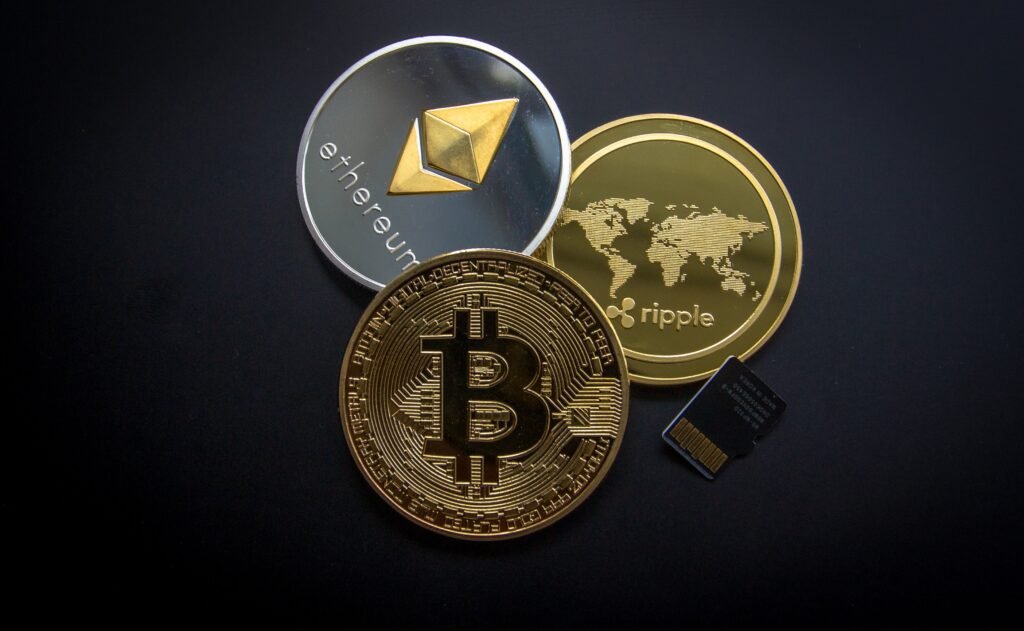
Cryptocurrency mining has emerged as a crucial process within the realm of digital currencies. Mining serves as the backbone of blockchain networks, securing transactions and maintaining the decentralized nature of cryptocurrencies. By leveraging advanced computing power, miners validate and verify transactions, ensuring their authenticity and preventing double-spending. The process involves solving complex mathematical puzzles to add new blocks to the blockchain. As miners contribute their computational resources, they are rewarded with newly minted cryptocurrency tokens. Mining plays a vital role in fostering the trust and integrity of cryptocurrencies. Its significance cannot be overstated, as it underpins the entire cryptocurrency ecosystem. If you are searching for a Bitcoin trading platform, you can Register Here to gain access to a reliable and secure platform that provides a seamless trading experience for buying, selling, and exchanging Bitcoin and other cryptocurrencies.
Understanding Cryptocurrency Mining
Cryptocurrency mining is a fundamental concept that forms the backbone of the digital currency world. It involves the process of verifying and validating transactions on a blockchain network. Miners utilize computational power to solve complex mathematical puzzles, which in turn adds new blocks to the blockchain. These blocks contain a record of all transactions that have occurred on the network. The verification process ensures the integrity and security of the transactions, preventing any fraudulent activities such as double-spending. Two common consensus algorithms used in mining are proof-of-work (PoW) and proof-of-stake (PoS). PoW requires miners to perform computationally intensive tasks, while PoS relies on the ownership of coins. Each algorithm has its own advantages and considerations, and understanding them is crucial for grasping the mining process. By actively participating in mining, individuals contribute to the decentralized nature of cryptocurrencies and help maintain the robustness of the blockchain network.
Getting Started with Mining
To start cryptocurrency mining, choose the right coin based on mining difficulty, potential profitability, and long-term viability. Popular beginner-friendly options are Bitcoin (BTC), Ethereum (ETH), and Litecoin (LTC). Acquire specialized hardware like ASICs, GPUs, or CPUs and select compatible mining software. Assemble a mining rig by connecting hardware components, installing the operating system, and configuring the mining software. Optimize performance by adjusting power limit and fan speed, while ensuring proper cooling and ventilation for rig stability. Follow comprehensive guides specific to your hardware and software to ensure a successful mining setup.
Mining Methods and Strategies
When it comes to cryptocurrency mining, you can choose between solo mining and pool mining. Solo mining offers complete control over rewards but has higher difficulty and longer block times. Pool mining combines your mining power with others, increasing block discovery chances and providing a consistent income. Selecting a reputable mining pool is crucial, considering factors like reputation, fees, payout methods, and size. Understand the mining algorithm of your chosen cryptocurrency for hardware compatibility and optimize your hashrate for efficiency. Additionally, cloud mining offers a remote rental option, but be cautious of scams and evaluate costs and returns before committing to contracts.
Mining Process and Best Practices
Secure a cryptocurrency wallet that’s compatible with your mined coins, offering robust security features like encryption and two-factor authentication. Configure your mining software with the latest version, following developer instructions. Customize settings for mining pools, intensity levels, and temperature limits based on hardware and desired performance. Regularly monitor and manage your mining setup, addressing hardware issues promptly and staying informed about mining trends and network updates. Implement backup and recovery measures for data protection. By following these best practices, you can ensure a smooth and productive mining experience while maximizing rewards.
Risks and Challenges in Mining
Cryptocurrency mining entails certain risks and challenges that miners should be aware of:
- Market Volatility: The value of mined cryptocurrencies can be highly volatile, affecting profitability and returns.
- Energy Costs: Mining requires significant computational power, resulting in high electricity consumption and associated costs.
- Hardware Expenses: Upgrading or replacing mining hardware can be costly, impacting mining efficiency and profitability.
- Mining Difficulty: Difficulty levels can increase, reducing mining rewards and potentially making it less profitable over time.
- Regulatory Changes: Government regulations and policies regarding cryptocurrencies and mining can impact the viability and legality of mining operations.
Miners must carefully assess these risks and adapt their strategies to mitigate potential challenges.
Conclusion
Cryptocurrency mining allows individuals to participate in the decentralized world of digital currencies. Understanding the basics, choosing the right cryptocurrency, and setting up hardware and software are crucial for starting a successful mining journey. Whether solo or in a pool, considering risks, reputable pools, and optimizing efficiency is essential.
Staying updated on mining algorithms, network changes, and best practices is important. Regular monitoring, maintenance, and security measures ensure a smooth mining experience. Evaluating market volatility, energy costs, and regulations is vital.
With knowledge, diligence, and adaptability, mining can be rewarding. It contributes to blockchain security and decentralization while potentially earning rewards. Stay informed, manage risks, and follow best practices to navigate challenges and succeed in cryptocurrency mining.


